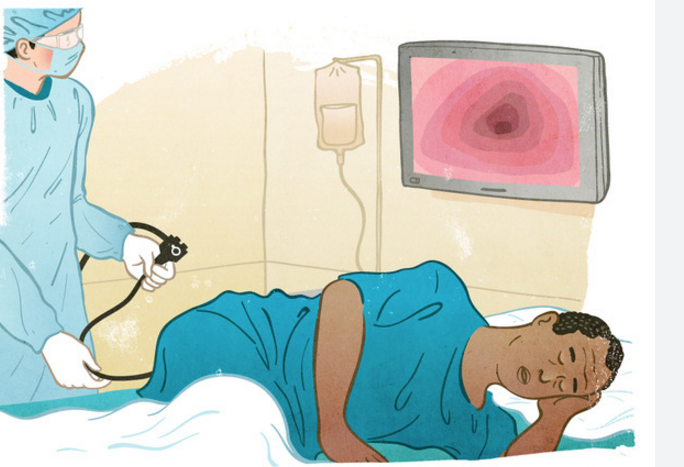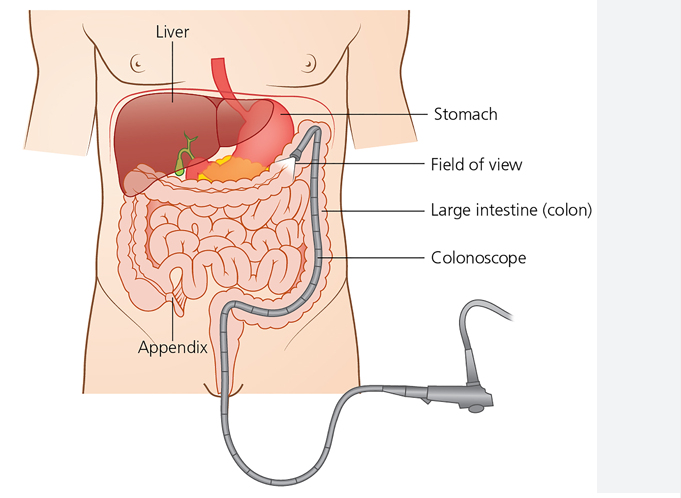COLONOSCOPY
During a colonoscopy, your doctor can examine the whole interior of your colon, or big intestine. A colonoscope, which is a long, flexible tube, is used for the procedure. On one end of the tube is a small camera and a light. It is introduced into your colon through your rectum.


A colonoscopy is a diagnostic procedure performed to examine the large intestine (colon) and the rectum for abnormalities such as enlarged, inflamed tissues, polyps, or cancer.
A long, flexible tube called a colonoscope is introduced into the rectum during a colonoscopy. The doctor can see the entire colon thanks to a tiny video camera at the tip of the tube.
During a colonoscopy, polyps or other abnormal tissue types may be removed using the scope if necessary. Moreover, tissue samples, or biopsies, may be obtained during a colonoscopy.
Why it’s done :
A colonoscopy may be suggested by your physician to:
Examine gut symptoms and indicators. Your doctor can investigate the reasons of chronic diarrhoea, stomach pain, rectal bleeding, and other digestive issues with the aid of a colonoscopy.
Check for the cancer of the colon. Your doctor might advise a colonoscopy every ten years if you’re 45 years of age or older and have an average risk of colon cancer, meaning that the only risk factor for colon cancer is your age. If you have additional risk factors, your physician might suggest a screen more quickly. One of the few methods for screening for colon cancer is a colonoscopy. Discuss your best alternatives with your physician.
Find additional polyps. In case you’ve previously experienced polyps, your physician can suggest a recheck colonoscopy to check for.
